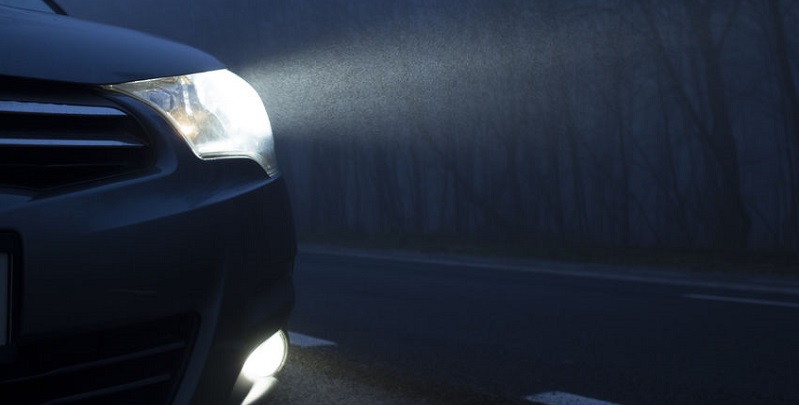The sophisticated sensors aboard an experimental autopilot car failed to prevent its fatal collision with a Tempe, Ariz., pedestrian. A leading automotive safety laboratory suggests that better headlights could have helped the car avoid the accident.
Humans and Autonomous Systems Need Illumination
The best way to avoid a car accident is to avoid potential obstacles as far in advance as possible. Safety researchers are finding that high-functioning headlights are the key, not just for human drivers but also for new autopilot systems and crash-avoidance systems.
Better lighting in nighttime settings equals a better ability to detect problems and more safety, even for vehicles equipped with sophisticated electronic sensors like radar, according to research by one of the United States’ most prominent automotive safety laboratories, the Insurance Institute for Highway Safety. Better headlights help not only drivers and autopilots detect nighttime obstructions, they also help other drivers and pedestrians see the oncoming vehicle.
Poor lighting was a factor in a much-publicized fatal accident in which a self-driving car being tested by the ride-sharing company Uber struck and killed a pedestrian in Tempe, Ariz., in March 2018. The accident shook the public’s confidence in autopilot systems and pushed the Uber project and all developing autonomous vehicle programs into the sharp focus of safety researchers and officials.
Lack of Light Led to Self-Driving-Pedestrian Accident
About half of fatal auto accidents happen at night, dawn, or dusk, IIHS says; the amount of pedestrians who are struck in low-light situations is too large to ignore. Driving, particularly at night, requires good road visibility, no matter who or what is behind the wheel, which is why headlights are so important. The Uber vehicle used a number of sensors such as “lidar” for light-detection and ranging, radar, and ordinary cameras. Unlike the more high-tech instruments, the cameras depend on ambient light, just as your eyes need light to see.
Video recorded by the Uber car shows the streetscape in near complete blackness. The victim was wearing dark clothes and was pushing a bike that lacked side reflectors in a relatively dark place between the street lights. The National Transportation Safety Board investigated and found that car’s high-tech sensors noticed the victim six seconds before the crash but hadn’t identified her as an obstacle. Researchers speculated that better lighting would have helped the cameras confirm she was a pedestrian and should be avoided. The company that manufactured the car’s sensors blamed the autopilot software for failing to brake or take evasive steps.
Better Headlights Key for Automotive Safety
IIHS evaluated the headlights on the specially fitted 2017 Volvo XC90 and gave them a poor rating because they fail to project enough low-beam light. Better-rated lights would have lit twice as much of the roadway before the car. For a human or computerized driver, the better light and greater lighted area will mean more time to see people on the street and take steps to avoid such a pedestrian accident. The logic will also apply to human-driven cars with advanced accident-avoidance systems, which like full autopilot systems, can automatically brake a car when their sensor arrays detect obstacles.
IIHS recently added an upgraded designation, “Top Safety Pick Plus”. Only vehicles with highly rated headlights and meeting other heightened criteria can achieve it. Here is IIHS’ list of its 2018 Top Safety Pick and Top Safety Pick Plus winners.
Vehicle owners who aren’t satisfied with their original-equipment headlights can shop a variety of aftermarket upgrades. However, evaluations by Consumer Reports indicate that brighter is not always better. Much has to do with the build of the vehicles in which the brighter bulbs are mounted. IIHS President David Harkey had this to say about headlights and vehicle safety:
“Headlights probably don’t come to mind when you think of autonomous vehicles, but they are important safety equipment, and we intend to continue our evaluations to encourage automakers to improve them.”

